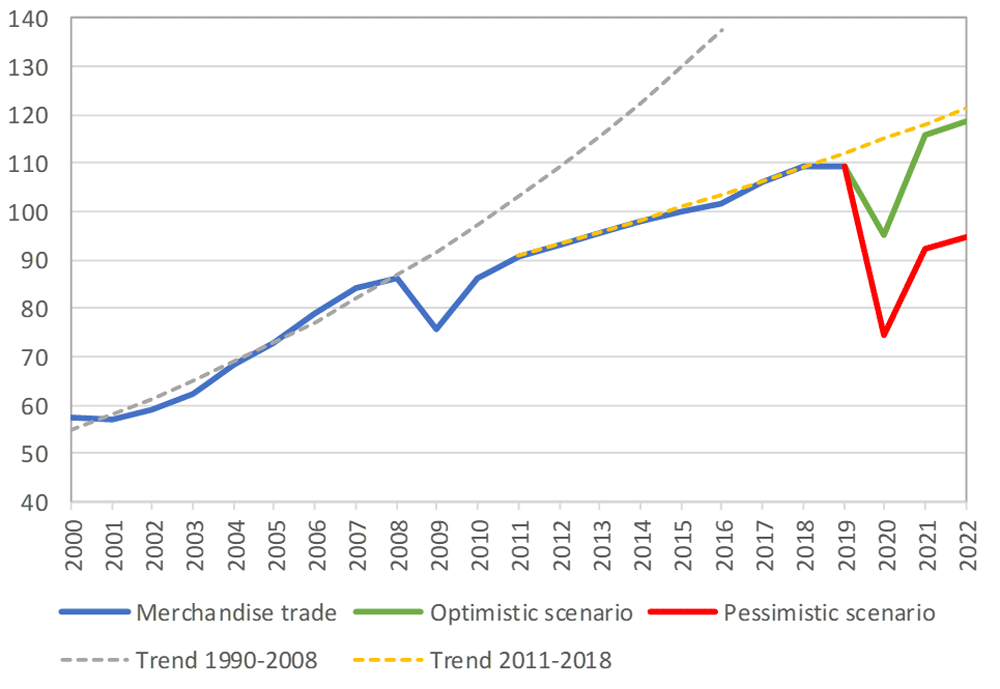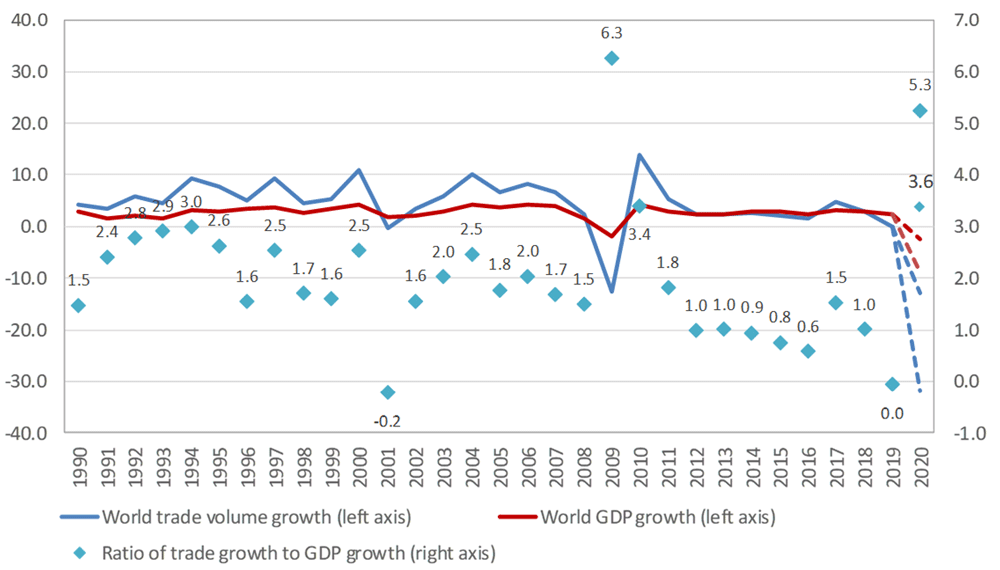Greenstein: New COVID-19 Bill Helpful But Inadequate — More Needed for States and Localities, the Most Vulnerable, and the Economy
https://www.cbpp.org/press/statements/greenstein-new-covid-19-bill-helpful-but-inadequate-more-needed-for-states-andCBPP today released a statement from Robert Greenstein, president, on the announcement of a bipartisan deal on a new coronavirus relief package.
While providing needed support to small businesses and hospitals, the new COVID-19 package announced today falls short even as an interim measure, failing to deliver crucial state and local fiscal relief and food assistance.
The White House's refusal to provide more relief to states — whose revenues are plummeting due to the virus' effect on economic activity — will almost certainly lead many states to cut education and other critical services, including even health care, and to lay off teachers and other workers as states struggle to balance their budgets both for the fiscal year ending June 30 and the new fiscal year that starts July 1. The approaching state budget cuts (and possibly tax increases in some areas) will cause the U.S. economy to contract further — making the economic downturn deeper and more protracted, causing many more people to lose their jobs, and magnifying the serious hardship we already see.
GIVEN THE SIGNIFICANT GAPS IN THIS LEGISLATION, IT'S CRITICAL FOR POLICYMAKERS TO BEGIN WORK RIGHT AWAY ON A NEW ROUND OF POLICIES THAT WILL MORE ADEQUATELY MEET THE NATION'S NEEDS.Similarly disappointing is the White House's and congressional Republicans' refusal to include in the new package an increase in the maximum SNAP (food stamp) benefit, as was done in the last recession. This measure, too, would both alleviate hardship and benefit the economy. Both the Congressional Budget Office and Moody's Analytics rank this measure among the most effective stimulative steps the federal government can take in a recession, on a bang-for-the-buck basis.
Given the significant gaps in this legislation, it's critical for policymakers to begin work right away on a new round of policies that will more adequately meet the nation's needs.
Legislation Omits State and Local Aid
States badly need substantial additional fiscal relief to help address the daunting budget crises they face. Local governments need assistance as well. Despite efforts from House Speaker Nancy Pelosi and Senate Minority Leader Chuck Schumer, however, additional aid was blocked from inclusion in the new package.
State budget shortfalls could total more than $500 billion over the next few years, which will dwarf the roughly $65 billion in aid in earlier COVID-19 packages that is readily available to narrow those shortfalls. Without substantially more aid, states — which are required to balance their budgets every year, even in recessions and depressions — will almost certainly lay off teachers and other workers and cut health care, education, and other key services, making the economic downturn more severe.
States' costs are rising rapidly now as they seek to contain the coronavirus, and as businesses lay off workers and incomes fall, forcing many more people to turn to Medicaid and other assistance. At the same time, state revenues are plummeting, knocking state budgets far out of balance. Maryland, for example, projects a 15 percent shortfall for this fiscal year; Michigan projects shortfalls of up to 12 percent. And the shortfalls for the new state fiscal year that starts July 1 in most states will likely be much greater and could well be of a magnitude not seen since the Great Depression, nearly a century ago.
A key way to get fiscal relief to states is by building on an increase Congress previously provided in the federal share of Medicaid costs (FMAP). This increase is a good first step, but it's too small and expires when the official health emergency ends, even though state economies likely will still be ailing well beyond that. This additional, temporary FMAP increase would prevent Medicaid cuts that could cause millions of people to lose coverage or access to critical services during a public health crisis, while also freeing up some state resources to narrow states' budget gaps. Federal policymakers should also increase and extend the Coronavirus Relief Fund and give states the flexibility to use it to cover rising costs in a wide range of programs and to offset the steep revenue losses they face.
Deal Also Lacks Food Assistance for Struggling Families
Despite more than 20 million people becoming unemployed in recent weeks and striking images of thousands of people lined up at food banks around the country, the White House and its allies on Capitol Hill also blocked inclusion of a boost in SNAP benefits in the new package.
Policymakers should address this in the next response measure. Temporarily raising the maximum SNAP benefit would be effective, efficient, and timely. States can deliver an increase in the basic SNAP benefit in a matter of weeks, without new applications or procedures. SNAP benefits are modest, averaging about $1.40 per person per meal, less than what most families need to put adequate food on the table throughout the month. Inadequate benefit levels are particularly problematic during an economic downturn when many families face income losses and joblessness tends to last for considerably longer periods than during stronger economic times. This raises the risk of families — including many with very young children, who are overrepresented among very poor households — facing more serious hardship as a result of the downturn.
Rapid Action Needed on These and Other Fronts
Various policymakers have said they intend to craft a more comprehensive response package at some point after finishing the small business package. The next package should not only address immediate needs and problematic gaps in the earlier relief measures, but also ensure that key provisions to keep the economy from sinking further and to alleviate hardship remain in place until unemployment is no longer high and the economy has significantly recovered. This is essential to ensuring that relief measures don't stop too soon, weakening the economy while leaving families and state and local governments bereft of needed help.
In addition to strengthened state and local fiscal relief and food assistance, priorities for a future package include:
Extending key unemployment insurance and other provisions now set to expire in coming months — well before the need for them will abate — by tying them to economic triggers so they neither expire prematurely nor remain in effect too long;
Mitigating the loss of health insurance and strengthening coverage to ensure that people can access needed health care during the public health crisis;
Addressing the needs of the most vulnerable households in various ways to prevent a spike in evictions, homelessness, food insecurity, and other hardships that are especially dangerous during a pandemic; and
Ensuring that immigrants and their families have access to assistance rather than being excluded from it.
# # # #
The Center on Budget and Policy Priorities is a nonprofit, nonpartisan research organization and policy institute that conducts research and analysis on a range of government policies and programs. It is supported primarily by foundation grants.
TOPICS:
Federal Budget, State Budget and Tax, Economy, Food Assistance
The Center on Budget and Policy Priorities is a nonprofit, nonpartisan research organization and policy institute that conducts research and analysis on a range of government policies and programs. It is supported primarily by foundation grants.
-- via my feedly newsfeed
 Click on graph for larger image.
Click on graph for larger image. At the worst of the Great Recession, continued claims peaked at 6.635 million, but then steadily declined.
At the worst of the Great Recession, continued claims peaked at 6.635 million, but then steadily declined.





